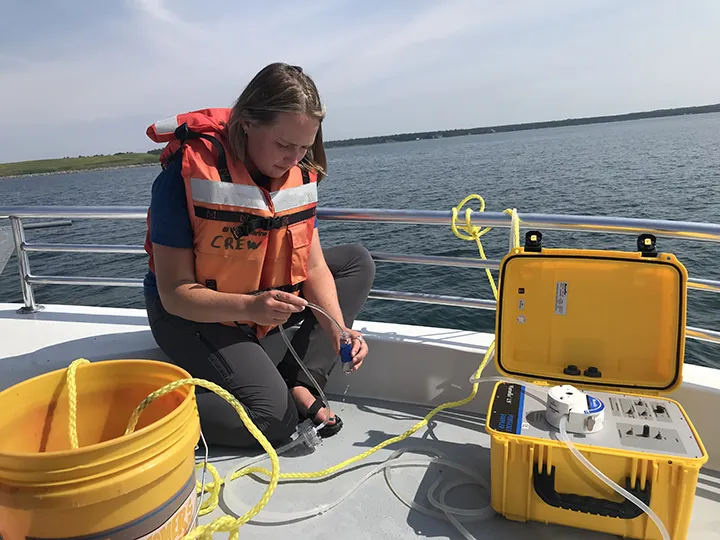Northern Michigan University biology student Maddy Saddler will address freshwater acidification and its implications for the Great Lakes ecosystem during a Thursday, July 27 presentation in her hometown of Alpena. She will give details about her role as a research intern working on the ongoing freshwater acidification monitoring project with Thunder Bay National Marine Sanctuary, Great Lakes Environmental Research Laboratory, and Michigan Sea Grant.
Saddler recently collected water samples from from the site of the William P. Rend shipwreck in Thunder Bay while out on the Lady Michigan glass-bottom boat, according to a feature story in The Alpena News.
"The process of acidification starts with a gas called carbon dioxide," Saddler told Lady Michigan passengers over the sound system. "Water bodies like Lake Huron absorb atmospheric carbon dioxide. That carbon dioxide reacts with the water and creates carbonic acid, which reduces the water's alkalinity, or its resistance to acidity.
“Increasing acidity in water can make it difficult for fish to perform basic activities like eating, growing, and reproducing. Acidification is often referred to as the osteoporosis of the sea because it also makes shells thinner and more brittle. Increased acidity can also increase the growth of harmful algal blooms that are toxic to humans, animals, fish species, and it can really disturb the lower food chain population of the Great Lakes.”
Read the full story on the research and her presentation here.

